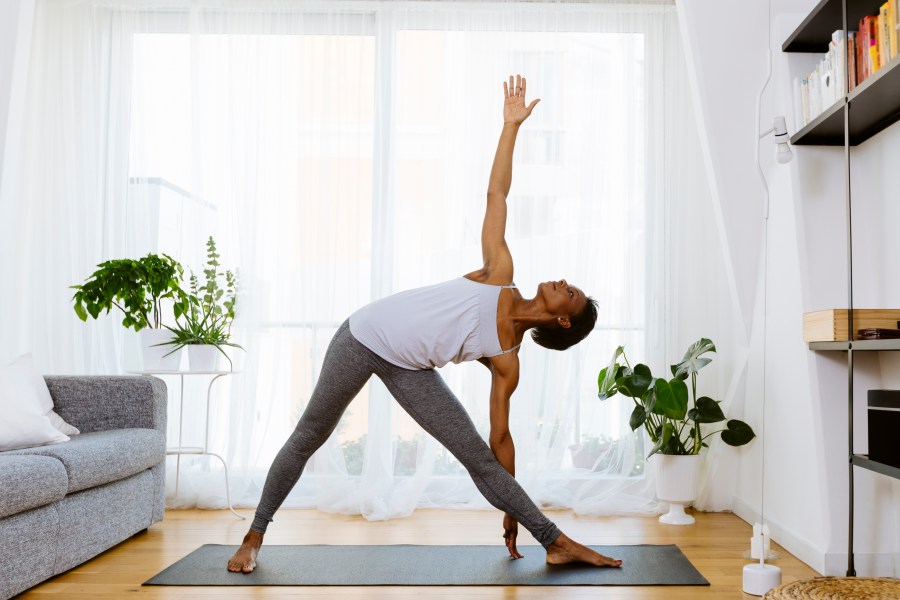Try these six simple stretches to help keep your joints supple and flexible this winter and through to spring!
Words: Katy Sunnassee. Header image: Westend61 via Getty Images. Illustrations: Melissa Bailey.
It goes without saying that keeping active and moving your body regularly will also help keep joints supple and mobile. The health regulatory body, the National Institute for Health and Care Excellence (NICE), no longer recommends paracetamol and strong opioids as a treatment option for chronic pain and instead recommends evidence-based alternatives and self-management techniques, such as exercise, to help manage pain and ease symptoms.
Research shows that for people with musculoskeletal conditions, engaging in appropriate physical activity reduces pain, improves quality of life and strengthens the muscles and joints. In fact, it is one of the best things you can do to maintain good musculoskeletal health, with one study concluding that physical activity is a key contributor to longevity.
While exercise can contribute to the rehabilitation of musculoskeletal conditions, regular physical activity at every stage of life reduces the risk of developing issues in the first place.
Stretch for strength
Katie Knapton, a chartered physiotherapist with more than 30 years of musculoskeletal experience and founder of PhysioFast Online (physiofastonline.co.uk), has teamed up with GOPO Joint Health to develop a 12-week Flex and Mobility Plan to support positive changes in joint health. With a focus on flexibility and mobility, the carefully curated plan encompasses easy-to-implement simple stretches and exercises, alongside the use of clinically backed supplement, GOPO Joint Health.
Aimed at those struggling with early signs of joint pain, musculoskeletal conditions such as arthritis, or those looking to implement preventative measures and improve their all-round flexibility and mobility, this plan is specially designed to support all ages and capabilities, with the option of intensifying the exercise depending on your ability.
The plan is made up of six exercises and stretches covering the upper and lower body, including a squat, shoulder taps and hip flexor stretches. All movement recommendations are intended to be implemented at least three times a week, with the ultimate goal to see a measurable difference in your flexibility and mobility in just three months.
‘Strength, flexibility and mobility are all factors of healthy living that are frequently overlooked, yet many daily tasks rely on these functions and are absolutely essential to our quality of life – especially as we get older. Implementing specific stretches and exercises is key to maintaining healthy joint function long-term,’ says Katie. Try her flexibility every day to help your joints feel better.
Elbow Clicks
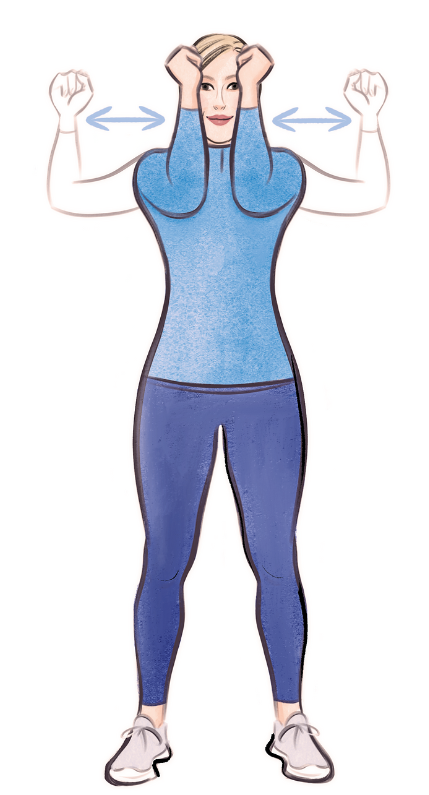
1. Stand up straight with your feet slightly apart.
2. Raise your arms at a 90-degree angle so that your elbows are touching in front of you.
3. Slowly extend the arms out either side whilst keeping in a right-angle position.
4. Repeat the exercise 20 times.
5. Try adding hand weights to build up strength.
Hip Flexor Stretches
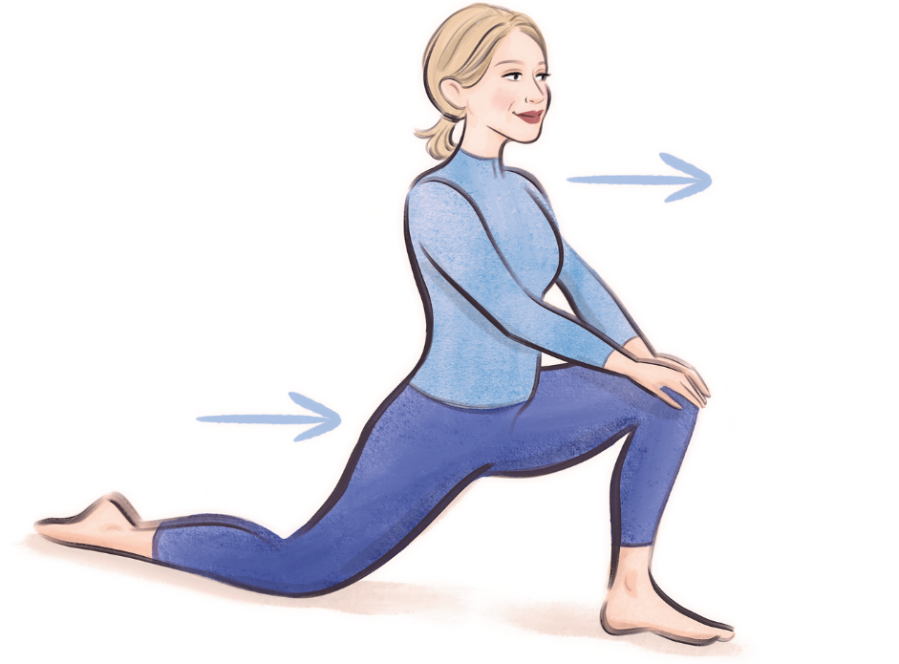
1. Kneel on your leg and bend the other leg out in front of you, with that foot flat on the floor.
2. Keeping your back straight, slowly push your hips forward until you feel a stretch in the upper thigh of your back leg and hip.
3. Hold the stretch for at least 15–30 seconds.
4. Switch legs and repeat.
Back Arches
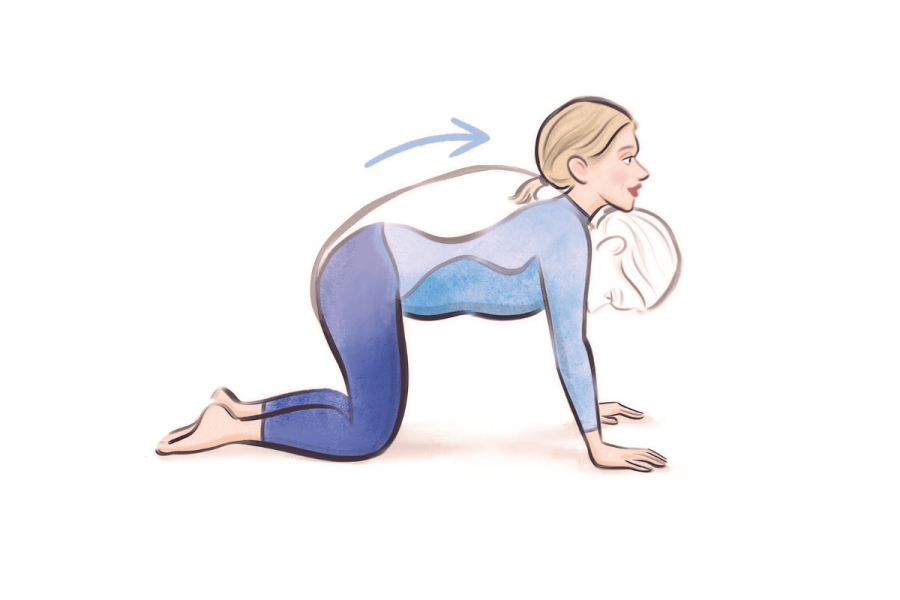
1. Start on all fours.
2. Create an arch in the middle of your back by raising your abdomen toward the sky while bowing your head.
3. Return to baseline position or challenge yourself and arch your back in the opposite direction by lowering your abdomen toward the ground while raising your head.
4. Repeat the exercise 20 times.
Leg Raise Stretch
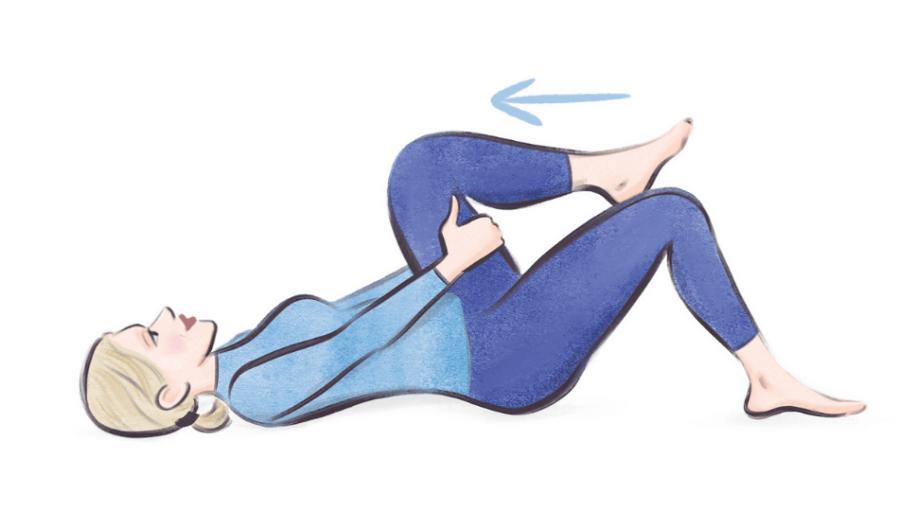
1. Lie on your back with your hips square and your legs laid out comfortably on the floor.
2. Bend one of your knees at a 90-degree angle, planting the foot flat on the floor.
3. Lift your straight leg slowly off the floor, use your arms to support your leg if you’re
struggling. To make the movement more challenging and to help increase strength,
try adding ankle weights.
4. Hold for 15–30 seconds and repeat on the other side.
Shoulder Taps
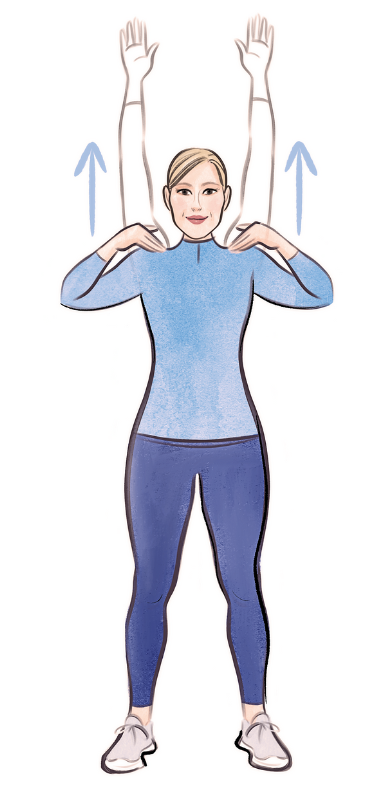
1. Stand up straight with your feet slightly apart.
2. Raise your arms above your head until they are fully extended.
3. Slowly bring your arms down and tap your shoulder.
4. Repeat the exercise 20 times.
5. To make it harder, try adding hand weights, or challenge yourself by getting into a plank
position and alternately touching the top of your shoulder with the opposite arm while
holding your body still.
Squat
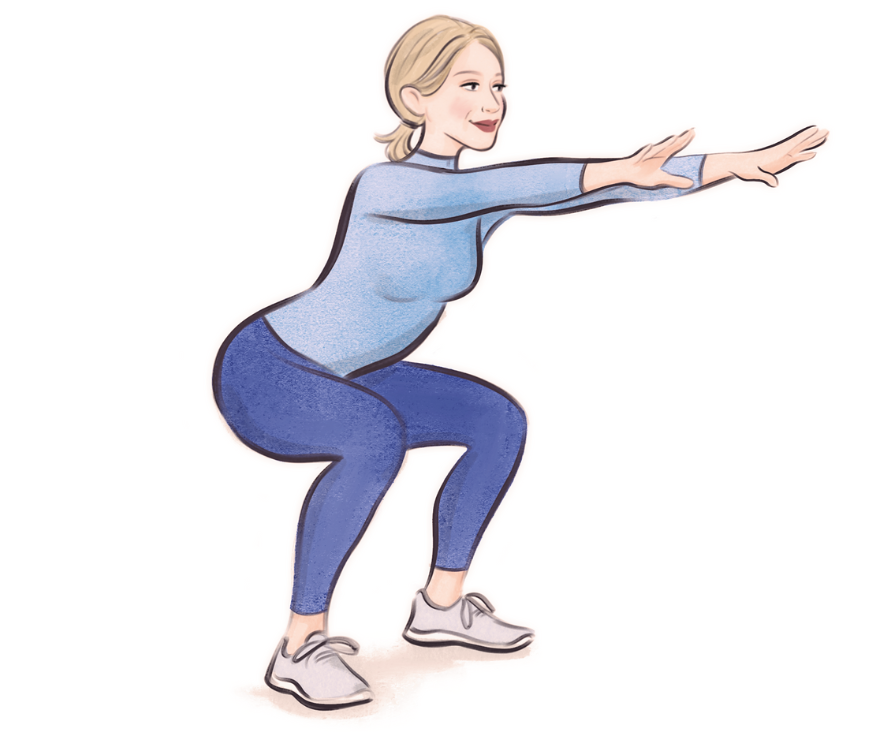
1. Stand with your feet slightly shoulder-width apart.
2. Extend your arms out in front of you and bend your knees, lowering yourself in a controlled manner whilst pushing your hips back.
3. Go as low as you can, stopping when your knees and arms are parallel with each other.
4. Once you reach the bottom of the squat, pause for a second before driving through
your heels to push yourself back up into a standing position. Increase depth, repetition or add weights to make it more challenging.
5. Repeat the exercise 12–15 times.
See more: Posture Workout: 6 exercises to improve your posture at home

